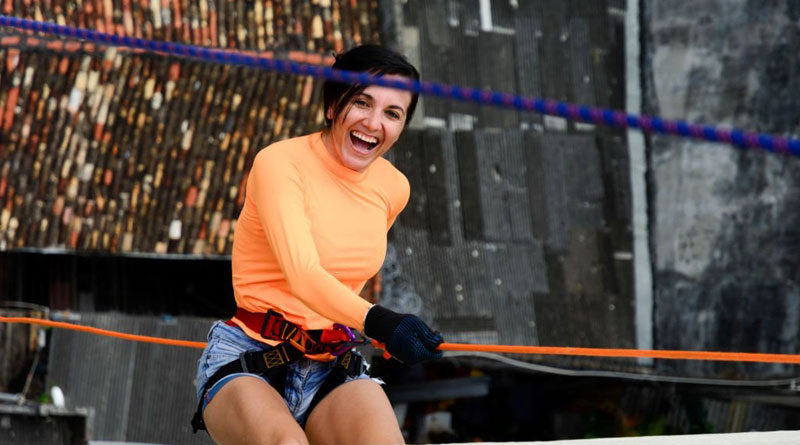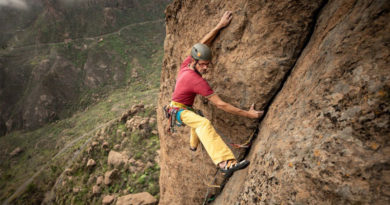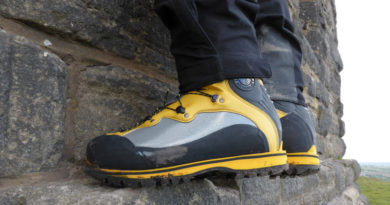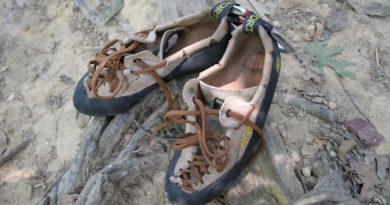Rappelling Harness vs. Climbing Harness: The Difference
Rappelling and climbing are both exciting outdoor activities that require proper gear and equipment for safety and success. A harness is a key component of the gear used in both activities, but there are important differences between a rappelling harness and a climbing harness. Choosing the right harness for the activity is crucial to ensure comfort, fit, and safety. In this blog, we’ll explore the differences between rappelling harnesses and climbing harnesses, their advantages and disadvantages, and factors to consider when choosing the right harness for your needs.
Rappelling Harness

A rappelling harness is a type of harness specifically designed for rappelling, also known as abseiling. Rappelling involves using a rope and a specialized tool called a descender to descend a vertical surface, like a rock face or a building. A rappelling harness is made to evenly distribute the climber’s weight across the body and to safely fasten them to the rope.
Types
Rappelling harnesses come in a variety of styles, including sit harnesses, full-body harnesses, and chest harnesses. The most popular kind of rappelling harnesses, known as sit harnesses, are made to be worn around the waist and legs like a belt. For heavy or inexperienced climbers, full-body harnesses offer more support. To add more upper-body support, chest harnesses are worn in conjunction with sit or full-body harnesses.
Key Features
The waist belt, leg loops, gear loops, and buckles are the major features of a rappelling harness. The harness is intended to be kept in place around the waist with the help of the waist belt and leg loops. Gear loops are used to secure climbing accessories like ropes and carabiners, and buckles make it simple to fine-tune the fit of the harness.
Advantages
The advantages of rappelling harnesses include their ability to securely attach the climber to the rope, distribute weight evenly, and provide a comfortable and supportive fit. However, they are not recommended for other activities, such as rock climbing, due to their specialized design.
Disadvantages
The disadvantages of rappelling harnesses include the potential for discomfort during prolonged use and the need for additional equipment, such as a chest harness, for added support and safety.
Climbing Harness
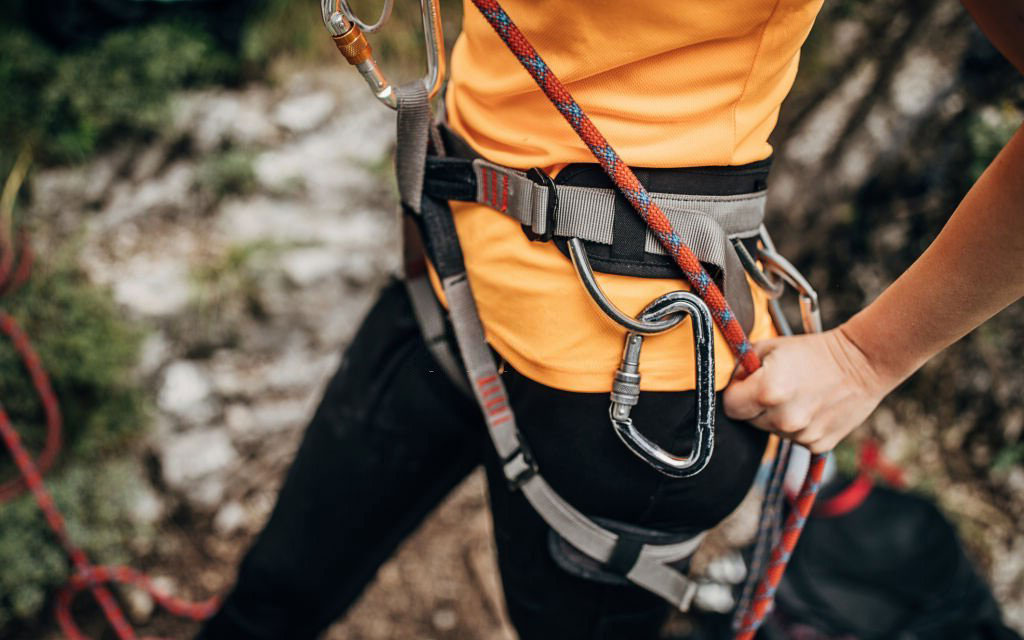
A climbing harness is a type of harness specifically designed for rock climbing, mountaineering, and other vertical activities. Climbing harnesses are designed to provide support and safety for climbers during ascent and descent.
Types
There are several types of climbing harnesses available in the market, including sit harnesses, full-body harnesses, and chest harnesses. Sit harnesses are the most common type of climbing harnesses and are designed to be worn around the waist and legs, like a belt. Full-body harnesses provide more support and are recommended for inexperienced or heavy climbers. Chest harnesses are used in conjunction with sit or full-body harnesses to provide additional support for the upper body.
Key Features
The key features of a climbing harness include a waist belt, leg loops, gear loops, and buckles. Leg loops are designed to keep the harness secure around the legs, while the waist belt keeps the harness in place around the waist. Gear loops are used to attach climbing gear, such as carabiners and ropes, and buckles allow for easy adjustment of the harness for a perfect fit.
Advantages
The advantages of climbing harnesses include their versatility, as they can be used for a variety of activities, including rock climbing, mountaineering, and via ferrata. Climbing harnesses also provide a comfortable and supportive fit and are designed to withstand the wear and tear of regular use.
Disadvantages
The disadvantages of climbing harnesses include their lack of specialized features for rappelling, which can make them less comfortable for extended periods of time during rappelling. However, climbing harnesses can still be used for rappelling, as long as the proper equipment and techniques are used.
Key Differences
The followings are the key differences between the two types of harnesses:
Differences in Design and Construction
Rappelling harnesses and climbing harnesses have different designs and constructions. Climbing harnesses are made to support and comfort the climber while they are standing, whereas rappelling harnesses are made to support the climber while they are seated. Wider leg loops and a thicker waist belt are typical features of rappelling harnesses, which add to the wearer’s comfort and support during extended periods of sitting. To allow for more movement while climbing, climbing harnesses, on the other hand, are typically lighter and more streamlined in design.
Differences in Functionality and Purpose
Harnesses for climbing and rappelling serve different purposes and have different features. While climbing harnesses are made for a variety of climbing activities, including rock climbing, mountaineering, and via ferrata, rappelling harnesses are made specifically for rappelling. Due to their specialized design, rappelling harnesses are not advised for other activities like rock climbing. On the other hand, climbing harnesses are more adaptable and can be used for a variety of activities.
Comparison of Comfort and Fit
Both climbing harnesses and rappelling harnesses are made to be cozy and supportive while being worn. Wider leg loops and a thicker waist belt are typical features of rappelling harnesses, which add to the wearer’s comfort and support during extended periods of sitting. To allow for more movement while climbing, climbing harnesses, on the other hand, are typically lighter and more streamlined in design.
Both kinds of harnesses can be altered to fit the specific user and come in a variety of sizes. To ensure a snug and secure fit, it’s critical to select the correct size and properly tinker with the harness.
Comparison of Safety Features
Both harnesses offer good safety features. Leg loops and a waist belt are features of both varieties of harnesses that help climbers be safely fastened to the rope and evenly distribute their weight across their bodies. They also feature gear loops for fastening ropes and other climbing accessories like carabiners.
Additional safety features for rappelling harnesses, like a chest harness, to offer more stability and prevent the climber from flipping over while rappelling, are sometimes included. Additional safety features on climbing harnesses, like a belay loop and a haul loop for attaching ropes and adding support while climbing, may be available.
Factors to Consider when Choosing a Harness
When choosing a harness, there are several factors to consider, including:
- Activity: The first factor to consider when choosing a harness is the activity for which it will be used. Different harnesses are designed for different activities, so it’s important to choose a harness that is appropriate for the activity. For example, if you plan to go rock climbing, a climbing harness is the best choice, while if you plan to go rappelling, a rappelling harness is recommended.
- Fit and Comfort: It’s important to choose a harness that fits properly and is comfortable to wear. A harness that is too loose or too tight can be uncomfortable and even dangerous. Look for a harness that can be adjusted to fit your body properly, with padded leg loops and a waist belt for added comfort during extended use.
- Weight: The weight of the harness is also an important factor to consider. A lightweight harness is ideal for activities such as rock climbing and mountaineering, as it allows for greater freedom of movement. However, a heavier harness may be more appropriate for activities such as rappelling, where a more padded and supportive harness is needed.
- Safety Features: Look for a harness that has appropriate safety features, such as leg loops, a waist belt, gear loops, buckles, and additional features such as a chest harness or belay loop for added safety during the activity.
- Price: Finally, consider the price of the harness. While it’s important to choose a high-quality harness that meets your needs, it’s also important to consider your budget. Look for a harness that provides good value for money and is within your budget.
In summary, when choosing a harness, it’s important to consider the activity for which it will be used, the fit and comfort of the harness, the weight limit, safety features, and the price. By taking these factors into consideration, you can choose a harness that is safe, comfortable, and appropriate for your needs.
Conclusion
To sum up, selecting the proper harness is crucial for anyone engaged in activities like rock climbing, mountaineering, or rappelling. The decision between a climbing harness and a rappelling harness is based on the activity being done as well as individual preferences. It’s crucial to take into account aspects like activity, fit and comfort, weight, safety features, and price when selecting a harness. By keeping these things in mind, you can pick a harness that is secure, comfortable, and suitable for your requirements. To ensure the greatest level of safety and enjoyment while participating in your activities, always follow the manufacturer’s instructions and make sure the harness is fitted and adjusted properly before use.

